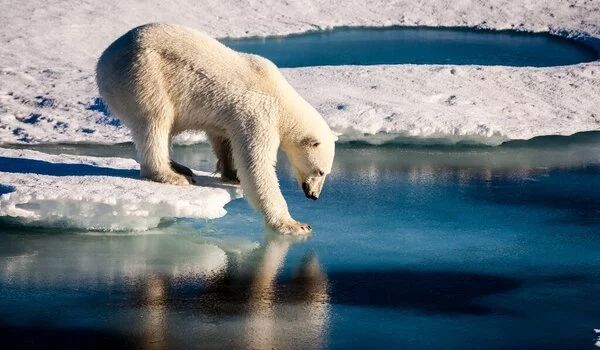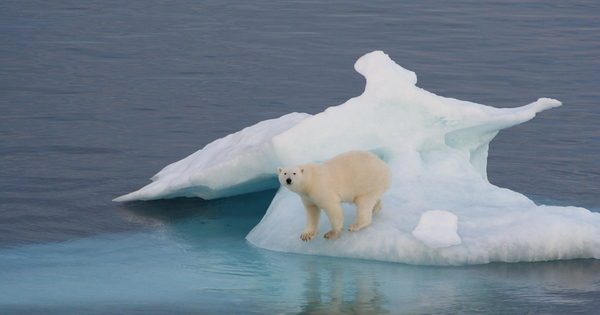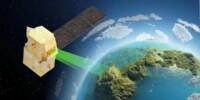“Pihoqahiak” means “ever-wandering one” in Inuit and refers to the polar bear, which is known to roam vast expanses of sea ice, sometimes plodding thousands of kilometers a year in search of seals. Some isolated polar bears are surviving as homebodies along the fjord-cut coastline of southeast Greenland, where the sea freezes over for only a few months of the year.
Unlike most polar bears, these bears do not migrate onto land to hunt or follow the sea ice during its annual retreat. Instead, the cunning ursids stalk seals on nearby glacial mélange — a floating jumble of icebergs, sea ice fragments, and snow that persists year-round near the front of glaciers in the fjords, according to researchers in Science.
“They’re residents in fjords that are sea ice–free for more than eight months of the year,” says Kristin Laidre, a biologist at the University of Washington in Seattle. “Normally, a polar bear wouldn’t be able to survive without sea ice for that long.”
Sea ice isn’t just frozen seawater for polar bears (Ursus maritimus); it’s also the platform from which they hunt their preferred prey — seals. However, as human-caused climate change raises the global temperature, that ice is melting. The number of polar bears living on sea ice in the Arctic Ocean’s Beaufort Sea and Canada’s Hudson Bay is already declining. Most other bear subpopulations, according to researchers, will be extinct by 2100 unless greenhouse gas emissions are reduced. The species is classified as “vulnerable” by the International Union for Conservation of Nature.
They’re residents in fjords that are sea ice–free for more than eight months of the year. Normally, a polar bear wouldn’t be able to survive without sea ice for that long.
Kristin Laidre
According to Laidre and her colleagues, the fjords of southeast Greenland and similar, limited areas could become a last, temporary refuge for a small number of bears, but only reducing climate change can save the ice-dependent species. Glacial mélange is rare in the Arctic, and what exists may vanish if temperatures rise too quickly.
Laidre and her colleagues estimate that hundreds of bears live in the fjords of southeast Greenland, though more research is needed to get a more precise count.
The southeast Greenland group was brought to the researchers’ attention while they were studying polar bears along the coast of east Greenland in order to provide advice to the Indigenous peoples who hunt the bears for subsistence. An analysis of 83 receiver-tagged polar bears from 1993 to 2021 revealed that bears living south of about 64° N latitude rarely interact with bears living north, and vice versa.

According to the researchers, southeast Greenland bears may be mostly isolated by Greenland’s ice sheet to the west and a strong current to the east, which could sweep seafaring bears south and stifle northward movement.
In northeast Greenland, the median distance traveled by tagged bears was 40 kilometers every four days. But in the southeast region, the median distance traveled was just 10 kilometers every four days, with bears sometimes traveling between neighboring fjords and sometimes remaining in the same fjord all year.
“For a polar bear, that’s nothing,” says Steven Amstrup, a zoologist and chief scientist of the conservation organization Polar Bears International, based in Bozeman, Mont., who was not involved in the study. “Apparently they’re finding enough resources there that they don’t have to make these huge, big movements.”
Southeast Greenland bears hunted on sea ice when it was present during a few months in winter and spring, the researchers found. For the rest of the year, the ursids used the glacial mélange that packed the fjords as hunting grounds.
“They use it just like sea ice,” Laidre says. “They’re able to walk [and hunt] on the mélange … and they can swim around between the pieces of ice and ambush seals.”
According to Amstrup, it’s not surprising that polar bears have settled at the fronts — or toes — of glaciers in the fjords. “The toes of these glaciers are frequently very productive areas,” he says, because glacial meltwater can flush nutrients from deeper in the ocean up to the water’s surface. “You’d think they’d have seal populations that could support bears.”
The scientists also looked at rare genetic variations in southeast Greenland bears. That research revealed that the animals studied shared a common ancestor around 200 years ago and have largely kept to themselves since then. “They’re the world’s most genetically isolated polar bears,” Laidre says. Conserving the distinctive bears will be important for protecting the species’ genetic diversity, which is already low, she says.
















